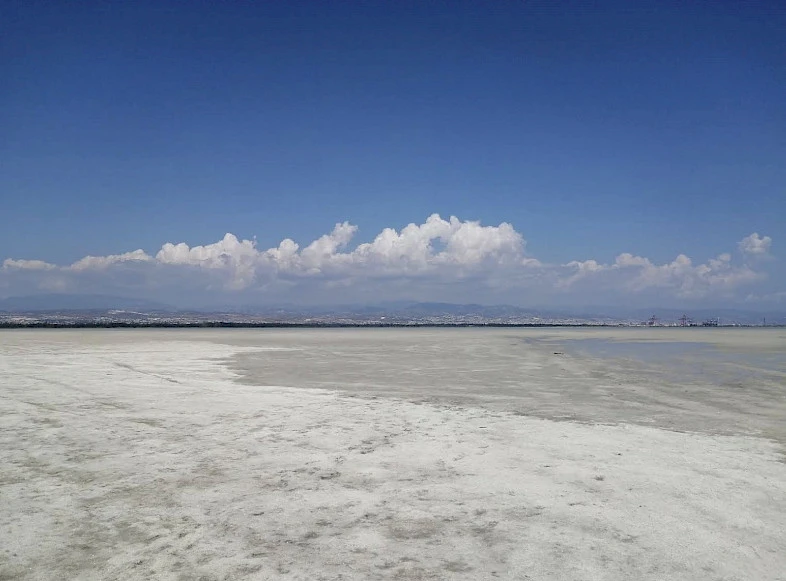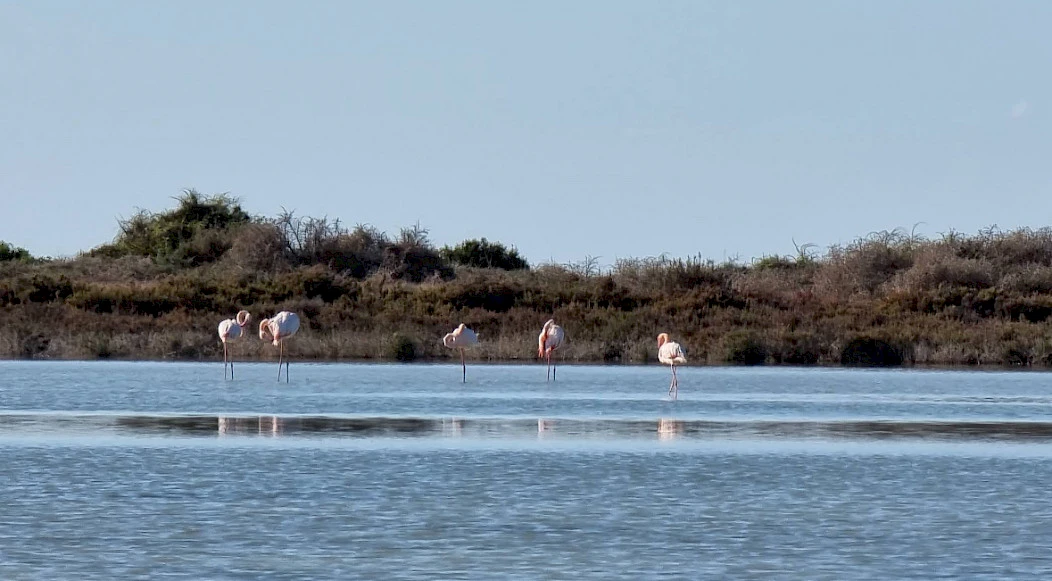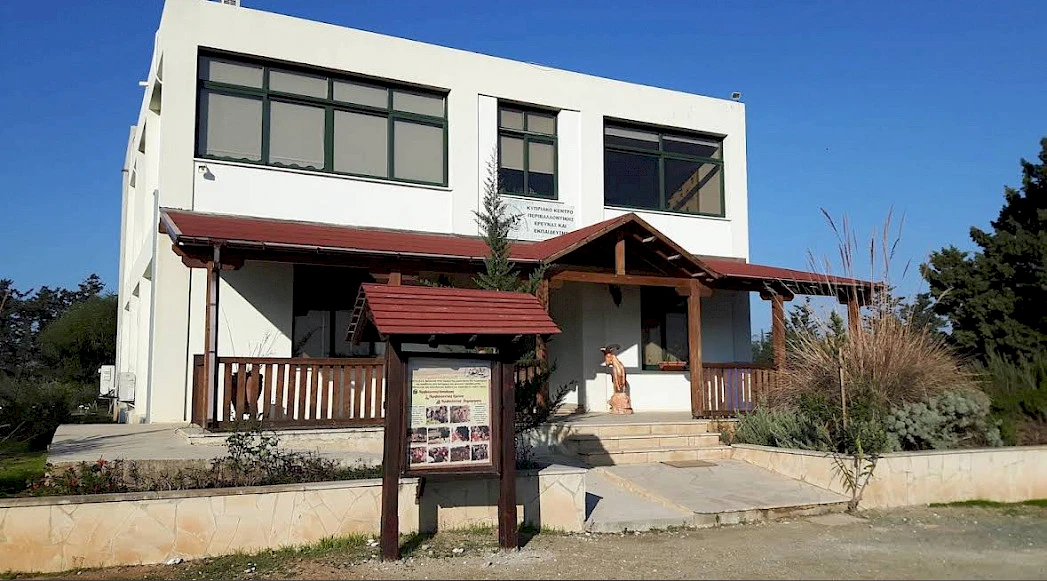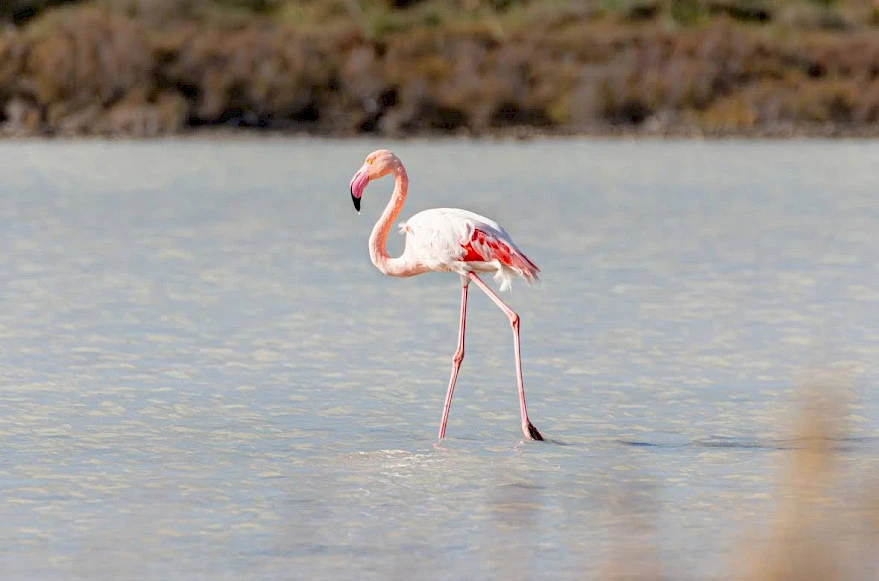Akrotiri Lake in Cyprus
- Water and ecology essentials
- Biodiversity and flamingos
- Visitor centers
- When to visit
- Conservation and current challenges
- Practical information
Water and ecology essentials
Akrotiri Lake (Limassol Salt Lake) is the largest inland water body in Cyprus, covering about 10.65 km². It is located within the British military bases of Akrotiri and Dekelia, southwest of Limassol. Its lowest point is 2.7 m below sea level, and the depth rarely exceeds 1 m.

The lake is seasonal: in summer, the bottom is covered with a salt crust, while in winter and spring it fills with rainwater and groundwater. Akrotiri plays a key role in maintaining the ecological balance of the entire peninsula.
Biodiversity and flamingos
Akrotiri is recognized as one of the main wetlands in the Eastern Mediterranean. More than 300 bird species have been recorded on the peninsula. It is a stopover site for migratory flocks traveling between Europe and Africa.

In winter, the lake becomes home to flamingos. In different years, their numbers ranged from 2,000 to 20,000 individuals. However, in January 2025, their number dropped to only 30 birds — a record low since observations began in 1992. Scientists attribute this to climate change, water level fluctuations, and increased development.
Visitor centers

Akrotiri Environmental Education Centre (AEEC) opened in 2004. It features exhibitions, lecture halls, and observation platforms for birdwatching.
Opening hours (2025): Mon–Fri: 07:30–14:00; Sun: 09:00–13:00; Sat and public holidays — closed.
Tel.: +357 25 826562. Free admission.
Cyprus Centre of Environmental Research & Education (CYCERE) operates near the Monastery of Saint Nicholas. The center conducts research and hosts students and groups for educational tours.

Opening hours (2025): Mon–Fri: 07:30–14:30.
Tel.: +357 25 954954, +357 25 864344.
When to visit
- Winter and spring — the best time for birdwatching and flamingos.
- Summer — the lake dries up, turning into a white salt field.
- Autumn — transitional period, depends on rainfall.
Conservation and current challenges
Since 2003, the lake has had Ramsar Wetland status. The area is also part of the Natura 2000 network as a Special Protection Area for birds and ecosystems.

Main threats to Akrotiri include declining water levels, pollution, changes in water flow, and urbanization pressure. All of these factors affect migratory bird populations.
Practical information
How to get there: easiest by car. Public transport does not reach the lake; the nearest stop is My Mall in Limassol, from where you can take a taxi.
What to bring: comfortable shoes, water, a hat, binoculars or a camera.
Nearby: Lady’s Mile Beach and Monastery of Saint Nicholas the Wonderworker (“Cat Monastery”). It is optimal to combine a visit to the lake, the monastery, and a seaside rest.
